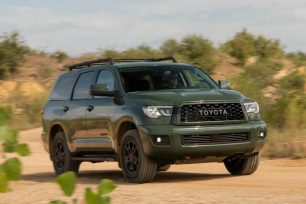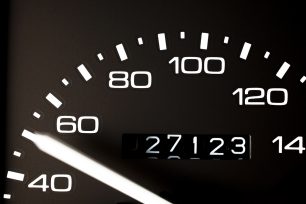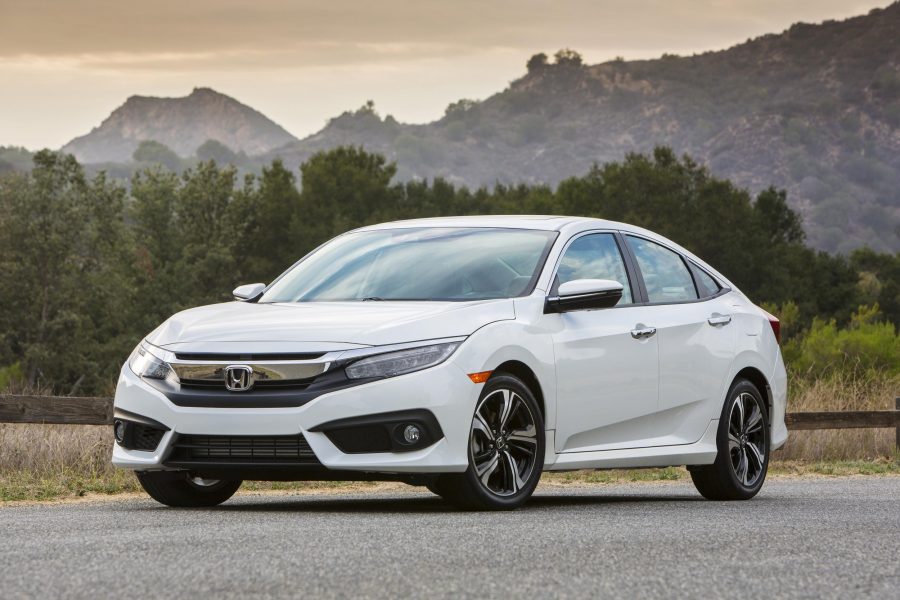The concept of an online, or digital, car auction site is not new. Fleet managers and wholesalers have been using the auction marketplace to locate and purchase inventory for dealership lots since the early-2000s. And even retail bidders have had access to auto auction sites like eBay Motors for over 20 years, though back then the thought of buying a vehicle through an online car auction, without seeing it in person or performing a pre-purchase inspection, was considered risky at best.

The automotive world has evolved over the past two decades, and in that time eBay Motors has sold millions of cars, most of them to first-time online car buyers willing to take a chance on the digital marketplace. But we now live in a world where online car buying isn’t just common, it’s dominant, helped along in recent years by everything from a global pandemic to confidence-bolstering technology like high-resolution photos and vehicle history reports.

But the biggest shift in the last year or two has been the explosive growth of car enthusiasts turning to car auction websites like Bring a Trailer (or BaT) and Cars and Bids when seeking their next exotic or classic car. Everything from a vintage Chevrolet Corvette or Ford Mustang GT to the latest Mercedes-Benz AMG or Porsche 911 regularly change hands on these sites.

For these buyers, this isn’t like going to an Autotrader or Craigslist classified ad, where the used car pricing on a high-volume Dodge, Nissan, or Toyota might range from $5,000 to $25,000. These enthusiast auction sites often trade in rare collector cars or high-end coupes from brands like BMW, Ferrari, and McLaren, with the highest bidders regularly committing to 6 – or even 7 – figure price tags.

Is spending that kind of money on a car you haven’t seen in person a good idea? Do sites like Bring a Trailer and Cars and Bids have policies in place to ensure high-quality live auctions that protect buyers and sellers? Let’s take a closer look at the origins of Bring a Trailer and Cars and Bids and then consider their policies that protect users.

Bring a Trailer (bringatrailer.com)
Bring a trailer started in 2007 as a pet project for founder Randy Nonnenberg. As someone who obsessively hunted online classified ads, Randy realized his efforts to identify the most interesting cars for sale online were going to waste – only he was seeing them. So he started Bring a Trailer to showcase his findings, and over the next 7 years, BaT built quite a following of like-minded car enthusiasts.
Randy credits Bring a Trailer’s well-established community, long before it switched from a classified ads aggregator to full-scale auction site, as BaT’s greatest asset. “The community, which is central and first and foremost, and everybody that looks at a BaT listing and the type of discussion, the way we interact with the community, the level of expertise in the existing BaT community, is a huge differentiator,” says Randy.
This expertise shows up in the comments section of each BaT auction, which could almost be described as watching real-time forums, dedicated to specific special interest vehicles or sports cars, materialize out of thin air over the course of a 7-day auction. These comments come from the hundreds of thousands of registered BaT members, who organically find their way to the same vehicle auctions where they have the most interest and knowledge.
Additional Bring a Trailer factors Randy Nonnenberg calls out include the site’s listing descriptions, which he says avoid the hyperbole that pervades most car sales situations. Randy told us the car has to stand on its own and the virtues of the vehicle, and the community will help vet the car beyond that. Randy also called out BaT’s commitment to customer service. For example, the site doesn’t get a fee if a car doesn’t meet reserve, even if the seller finds a BaT buyer after the auction, and a deal is made below reserve.

Cars and Bids (carsandbids.com)
Cars and bids was co-founded by popular automotive YouTuber Doug DeMuro and launched in 2020. Doug’s reputation for describing not only interesting cars but interesting details about interesting cars plays well in the online auction world, where half the fun and enthusiasm for a special interest vehicle derives from the “quirks and features” Doug is known for identifying.
Cars and Bids has grown quickly, with over 220,000 registered users. Doug says he’s got data to show Cars and Bids delivers a higher sale price than its competitors on a wide range of models, which he credits to the site’s engaged bidders, dedicated focus on modern enthusiast cars from 1981 and up, and ability to get a seller’s auction live quickly, usually less than a week after receiving all the vehicle information and photos.
Doug admits to not having the same ultra-high-end buyers as some other sites. At least, not yet. But he’s also confident about the strong prices he’s getting in the sub-$100,000 market. “I’m comfortable owning the $20,000 to $90,000 market. There are more of those cars, and we have the data to show we’re getting higher prices in that range.”

Other advantages Doug claims for Cars and Bids include its low buyer’s fee (4.5 percent), zero seller’s fee, and a chat support system to help users before, during, and after the auction. Doug also has a huge social media following within the automotive enthusiast community. In his words, “Simply put, we’re able to drive more attention to each auction, and the result is more views, more bidding, and more money.”
How does Bring a Trailer and Cars and Bids Work?
The buying and selling process for both Bring a Trailer and Cars and Bids is remarkably similar. Both sites require users to register with a credit card to cover the listing fees, both offer reserve price and no reserve auctions, and both have a support team in place to assist sellers when listing a vehicle and both buyers and sellers after the auction ends.Both sites require sellers to provide proof of ownership, and both encourage sellers to provide in-depth, high-quality photography that accurately represents the vehicle. Video showing the vehicle starting and driving is also encouraged. Both sites also offer free CarFax vehicle history reports for every vehicle listed, and both allow for real-time questions and answers between prospective buyers and sellers during the 7-day auction. You also don’t have to worry about last-minute sniping because any bids that come in during the final minutes of a live auction extend the auction to allow other bidders to respond.
What are the key differences between Bring a Trailer and Cars and Bids? Beyond the items each site’s founder mentioned above, the differences come down to fees and a few policies.
Bring a Trailer auctions cost either $99 for sellers who take their owner photos, or $250 for sellers who want a professional photographer to take the pictures. You can also get a “White Glove” service from Bring a Trailer, designed for sellers who have high-end vehicles and want high-end service. The White Glove price is variable and based on the level of service a seller receives. The buyer’s fee for BaT is 5 percent, with a $250 minimum and $5,000 maximum.
Cars and Bids allows sellers to list vehicles for free, but the site will connect you with a photographic service offering a 1-hour, 50-image shoot for $149 or a 2-hour, 100-image shoot for $249. The buyer’s fee for Cars and Bids is 4.5 percent, with a $225 minimum and a $4,500 maximum.
How Am I Protected if There's a Problem with an Auction?
This is the most important question related to any online auction or purchase process. Even with hundreds of photos, a video, a CarFax history report and a community of enthusiasts involved, a buyer in New York is still placing a lot of faith when buying from a seller 3,000 miles away in San Francisco. What provisions do Bring a Trailer and Cars and Bids have in place to protect someone spending tens – or hundreds – of thousands dollars on a used car they’ve never physically inspected?As mentioned, both sites require a credit card to register to bid and a phone number to sell, and both charge the winning bidder’s card as soon as the auction ends. That discourages buyers from not following through on the purchase…but it still happens. Randy Nonnenberg told us Bring a Trailer has a 97.7 percent success rate on completed auctions, which means only 2.3 percent have something go amiss after a winning bid is declared. If it’s a buyer that refuses to follow through they are still charged the buyer’s fee (up to $5,000) and they are banned from the site.
Cars and Bids has similar policies in place and a similarly low “failure” rate on completed auctions, but they go a step further by not only charging the buyer’s fee but giving half that fee to the seller if a buyer flakes and doesn’t complete the purchase. Of course, Doug also confided that buyers can, and often do, request a “chargeback” in these situations, – meaning they dispute the charge with their credit card company and are refunded the buyer’s fee.
Conversely, what if the buyer follows through in good conscience only to receive a vehicle that’s nothing like what was described in the auction? Again, this is a relatively rare occurrence because of the in-depth photography and vehicle history report presented for most cars. But it does happen and, like the chargeback situation above, there’s not much a buyer can do after the purchase has been finalized and the money has changed hands.
This is why, despite the explosive growth of Bring a Trailer and Cars and Bids recent years, buyers and sellers should perform their own due diligence before using an online auction site. Remember, at the end of the day these sites are essentially elaborate systems meant to introduce a seller and a buyer to each other. These sites don’t personally vet the cars, or the individuals, involved in the transaction.
Examples of due diligence include contacting the buyer or seller directly, before the auction ends, to get a sense of who you’re dealing with. Better still, as a buyer it’s always in your best interest to only bid on cars you can physically inspect, and hopefully even test drive, before an auction ends. That might mean limiting your bids to local auctions, or it might mean booking a last-minute flight.
Neither of those are preferred methods of buying or selling a vehicle, but they are prudent measures when spending the kind of money these auctions typically generate. Even with all the technology we have at our disposal in 2022 the classic mantra is still the best policy:
Buyer (and Seller) Beware…
More from iSeeCars:
About iSeeCars.com

































































